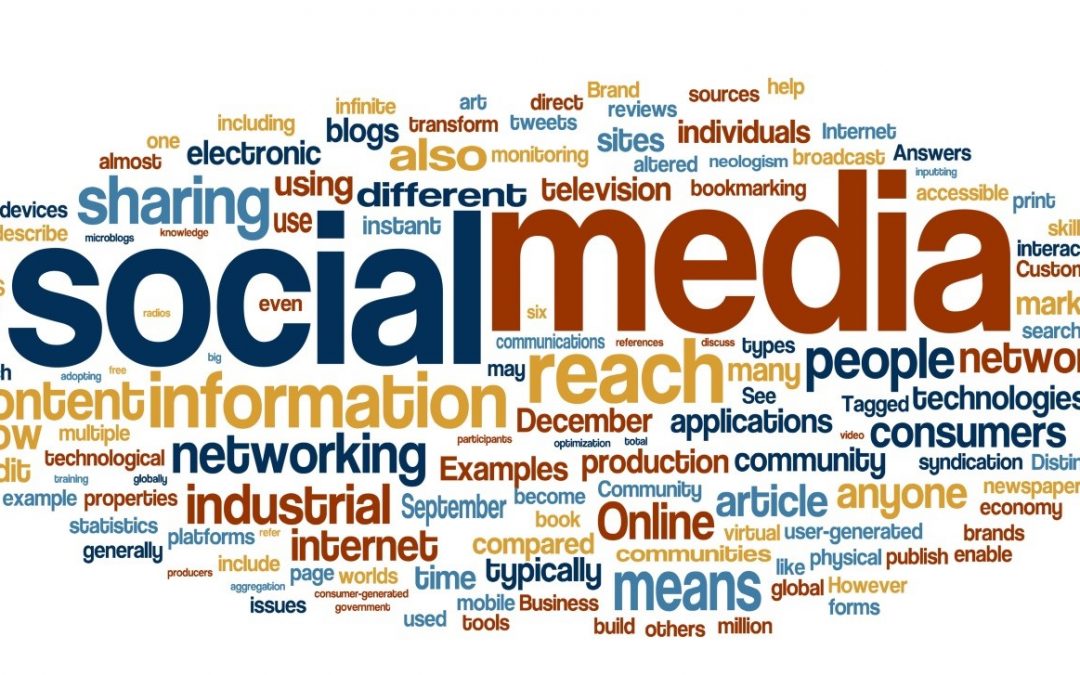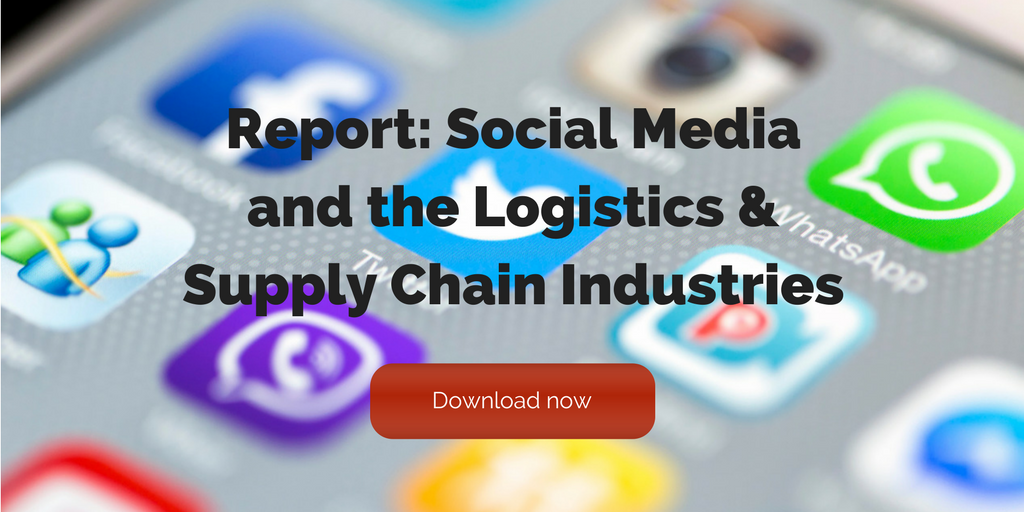
by Fronetics | Jan 29, 2014 | Blog, Marketing, Social Media

There is much more than meets the eye when it comes to social media marketing. From expanding corporate communications to learning valuable information about consumers, social media has benefits that help businesses grow and expand their reach. Here are four powerful reasons why your business needs to incorporate social media into your marketing strategy:
1. Sharing Educational Content with Consumers
Leveraging social media as a tool for educating customers is a B2B marketing strategy that many businesses miss out on. Build your social media channels and develop thought leadership by providing objective, educational content that is relevant to your customers’ business problems. Become a resource of industry-related information through your original content and content curated from across the Internet. When potential customers are beginning their buying process, they gravitate towards companies with whom they are familiar and perceive as industry experts. According to Sirius Decisions, 70% of the buyer’s journey is complete before they ever contact a sales representative. Socially sharing educational content will increase your visibility to buyers during the sales process. Buyers are more informed than ever before, and businesses need to strive to be a resource for their customers on social media.
2. Improve Your SEO Ranking
Inbound links and social shares are two key performance indicators (KPIs) to be mindful of throughout the SEO process. Inbound links and social shares are two increasingly important factors that are taken into consideration during website indexes. These increase what Google refers to as Author Authority, and the more authority, the more SEO weight your website gains. Bottom line: the stronger your presence on social media, the higher your search engine page rank will be.
3. Generate New Leads
Social media can be used to help businesses build robust marketing campaigns to support lead generation, often with little to no cost. The plethora of social media networks and websites can seem overwhelming, but popular networks like LinkedIn and Twitter are a great place to start using social media to generate qualified leads.
LinkedIn is an ideal space for businesses; the community of professionals is a great resource for networking. LinkedIn supports businesses with community pages, company pages, groups and discussion boards for users to share ideas, content and talk to like-minded professionals. LinkedIn is also a useful tool for leads by gauging interest in products and services based on conversations. Additionally, Twitter is another free platform that users can use to drive lead generation efforts. According to Inside View, B2B marketers who use Twitter generate twice as many leads as those that do not.
4. Stretch Your Marketing Dollars
Even if you do chose to upgrade your social media toolkit and pay for premium benefits and services, the cost of implementing a social media marketing campaign is significantly lower than using many traditional mediums. The real-time data and analytics received through different social platforms provide users with valuable insights and the opportunity for businesses to pivot campaigns and tactics as needed in order to have the highest possible impact. Moreover, you be flexible with your marketing strategies, campaigns and tactics.
What have been some of the biggest benefits that your organization has seen as a result of their social media practices?
For more information on the benefits of social media, check out our white paper.

by Fronetics | Jan 29, 2014 | Blog, Marketing, Social Media

There is much more than meets the eye when it comes to social media marketing. From expanding corporate communications to learning valuable information about consumers, social media has benefits that help businesses grow and expand their reach. Here are four powerful reasons why your business needs to incorporate social media into your marketing strategy:
1. Sharing Educational Content with Consumers
Leveraging social media as a tool for educating customers is a B2B marketing strategy that many businesses miss out on. Build your social media channels and develop thought leadership by providing objective, educational content that is relevant to your customers’ business problems. Become a resource of industry-related information through your original content and content curated from across the Internet. When potential customers are beginning their buying process, they gravitate towards companies with whom they are familiar and perceive as industry experts. According to Sirius Decisions, 70% of the buyer’s journey is complete before they ever contact a sales representative. Socially sharing educational content will increase your visibility to buyers during the sales process. Buyers are more informed than ever before, and businesses need to strive to be a resource for their customers on social media.
2. Improve Your SEO Ranking
Inbound links and social shares are two key performance indicators (KPIs) to be mindful of throughout the SEO process. Inbound links and social shares are two increasingly important factors that are taken into consideration during website indexes. These increase what Google refers to as Author Authority, and the more authority, the more SEO weight your website gains. Bottom line: the stronger your presence on social media, the higher your search engine page rank will be.
3. Generate New Leads
Social media can be used to help businesses build robust marketing campaigns to support lead generation, often with little to no cost. The plethora of social media networks and websites can seem overwhelming, but popular networks like LinkedIn and Twitter are a great place to start using social media to generate qualified leads.
LinkedIn is an ideal space for businesses; the community of professionals is a great resource for networking. LinkedIn supports businesses with community pages, company pages, groups and discussion boards for users to share ideas, content and talk to like-minded professionals. LinkedIn is also a useful tool for leads by gauging interest in products and services based on conversations. Additionally, Twitter is another free platform that users can use to drive lead generation efforts. According to Inside View, B2B marketers who use Twitter generate twice as many leads as those that do not.
4. Stretch Your Marketing Dollars
Even if you do chose to upgrade your social media toolkit and pay for premium benefits and services, the cost of implementing a social media marketing campaign is significantly lower than using many traditional mediums. The real-time data and analytics received through different social platforms provide users with valuable insights and the opportunity for businesses to pivot campaigns and tactics as needed in order to have the highest possible impact. Moreover, you be flexible with your marketing strategies, campaigns and tactics.
What have been some of the biggest benefits that your organization has seen as a result of their social media practices?
For more information on the benefits of social media, check out our white paper.

by Fronetics | Jan 28, 2014 | Blog, Logistics, Marketing, Social Media, Strategy, Supply Chain

Social media and social media technologies have rapidly changed the way companies do business across every type of industry. Social media brings businesses closer to their customers, provides a platform for communication and building thought leadership, and when executed properly it can help drive business and provide a significant return on investment. Businesses that ignore social media forgo these opportunities and miss out on potential business development opportunities.
According to The McKinsey Global Institute, 90 percent of companies who were using social media or social technologies for their business reported benefiting from their efforts in 2012. And how could they not? Utilizing a social media technology can increase a company’s reach into their industry and provides optimal channels for communicating with their customers.
The supply chain and logistics industries are two industries that have not adopted social media and social technologies as quickly as others. Business owners in these have a difficult time seeing past the “social” aspect of these technologies and understanding what the implied benefits of using social technologies can mean for their business. Many find themselves asking “why?” instead of “how?” when considering implementing a social media strategy, and ultimately allocate resources elsewhere within their businesses.
The Fronetics white paper, Social Media and the Logistics and Supply Chain Industries: Why Not Participating is a Risk You Can’t Afford to Take, provides meaningful insights into why supply chain and logistics companies need to be using social media and the value of these technologies. Learn how to move past the barriers to adoption, how to leverage social technologies, and learn what a social presence can mean for your business.
To learn more about why your business needs social media, download Social Media and the Logistics and Supply Chain Industries: Why Not Participating is a Risk You Can’t Afford to Take today.

by Fronetics | Jan 28, 2014 | Blog, Logistics, Marketing, Social Media, Strategy, Supply Chain

Social media and social media technologies have rapidly changed the way companies do business across every type of industry. Social media brings businesses closer to their customers, provides a platform for communication and building thought leadership, and when executed properly it can help drive business and provide a significant return on investment. Businesses that ignore social media forgo these opportunities and miss out on potential business development opportunities.
According to The McKinsey Global Institute, 90 percent of companies who were using social media or social technologies for their business reported benefiting from their efforts in 2012. And how could they not? Utilizing a social media technology can increase a company’s reach into their industry and provides optimal channels for communicating with their customers.
The supply chain and logistics industries are two industries that have not adopted social media and social technologies as quickly as others. Business owners in these have a difficult time seeing past the “social” aspect of these technologies and understanding what the implied benefits of using social technologies can mean for their business. Many find themselves asking “why?” instead of “how?” when considering implementing a social media strategy, and ultimately allocate resources elsewhere within their businesses.
The Fronetics white paper, Social Media and the Logistics and Supply Chain Industries: Why Not Participating is a Risk You Can’t Afford to Take, provides meaningful insights into why supply chain and logistics companies need to be using social media and the value of these technologies. Learn how to move past the barriers to adoption, how to leverage social technologies, and learn what a social presence can mean for your business.
To learn more about why your business needs social media, download Social Media and the Logistics and Supply Chain Industries: Why Not Participating is a Risk You Can’t Afford to Take today.

by Fronetics | Sep 18, 2019 | Blog, Marketing, Social Media, Video Marketing
Here are 15 social video marketing statistics that every supply chain marketer should be aware of in 2019.
Highlights:
- 87% of business use video as a marketing tool.
- 83% of marketers report that video gives them a good ROI.
- Social video marketing trends to be on the lookout for: live video and 1:1 personalized video.
If you believe everything you read, you might think that social video marketing has taken a bit of a hit in the past year or so. Largely thanks to Facebook’s well-publicized inflation of video view metrics, companies are naturally wary of investing in video creation and promotion on the platform.
But Facebook’s transgressions shouldn’t undermine marketers’ confidence in the future of social video marketing. Both expert analysis and hard numbers support the notion that video isn’t going anywhere. As digital media expert Michael Humphrey puts it, “All the major upward trends still wrap around video.”
According to Lux Narayan, CEO of independent social analytics company Unmetric, audiences “are longing for more interactive experiences as well as long-form storytelling that only video can best achieve.”
Here are 15 social video marketing statistics we think supply chain marketers should be aware of.
15 social video marketing statistics for 2019
- 47% of internet users have watched brand advertising videos on social media within the past 3 months. (Toluna)
- Of the social media users who have watched branded videos in the past 3 months, 43% watched on Facebook, 38% on YouTube, 18% on Instagram, and 13% on Twitter. (Toluna)
- 87% of businesses now use video as a marketing tool, up from 63% in 2017. (Wyzowl)
- 55% of people consume videos thoroughly – the highest percentage of any content type. (HubSpot)
- 30% of users prefer video ads to text or still image ads, while 52% report having no preference. (Only 18% prefer text or still image ads). (Toluna)
- 83%of marketers say video gives them a good ROI, up from 78% in 2018. (Wyzowl)
- 52% of consumers say that watching product videos makes them more confident in online purchase decisions. (Invodo)
- 68%of people say they’d most prefer to learn about a new product or service by watching a short video, over text-based articles (15%), infographics (4%), presentations and pitches (4%), and ebooks and manuals (3%). (Wyzowl)
- 48% of social media users have sought more information about a product or service based on social video marketing. (Toluna)
- 33% of survey respondents answered yes to having bought a product or service from a brand solely based on social video marketing. (Toluna)
- 88% of video marketers are satisfied with the ROI of their video marketing efforts on social media. (Animoto)
- 82% of social media users prefer live video from a brand to social posts. (Impact)
- 81% of marketers say video has helped them generate leads, and 84% say video has helped them increase traffic to their website. (Wyzowl)
- 61% of marketers have made more marketing videos in house in 2018 than they did in 2017. (Animoto)
- 67% of users said they would like to see more social video marketing in the future over other types of ads. The remaining 33% are indifferent, not opposed. (Toluna)
The future of social video marketing
Suffice it to say, the numbers bear out the fact that video marketing, and particularly social video marketing, is a trend that’s here to stay. Live video is increasingly popular, and savvy brands are incorporating it into their strategies.
In addition to live video, given the growing ease of shooting video on smartphones, another big trend is likely to be 1:1 video. Marketers can nurture leads via personalized video messages, rather than phone calls or emails, using video to offer additional content, product support, or simply to foster a relationship.
The bottom line is that video offers up the kind of engaging storytelling that users today want. And social media is the ideal distribution platform for video, making social video marketing a winning strategy.
Related links:





